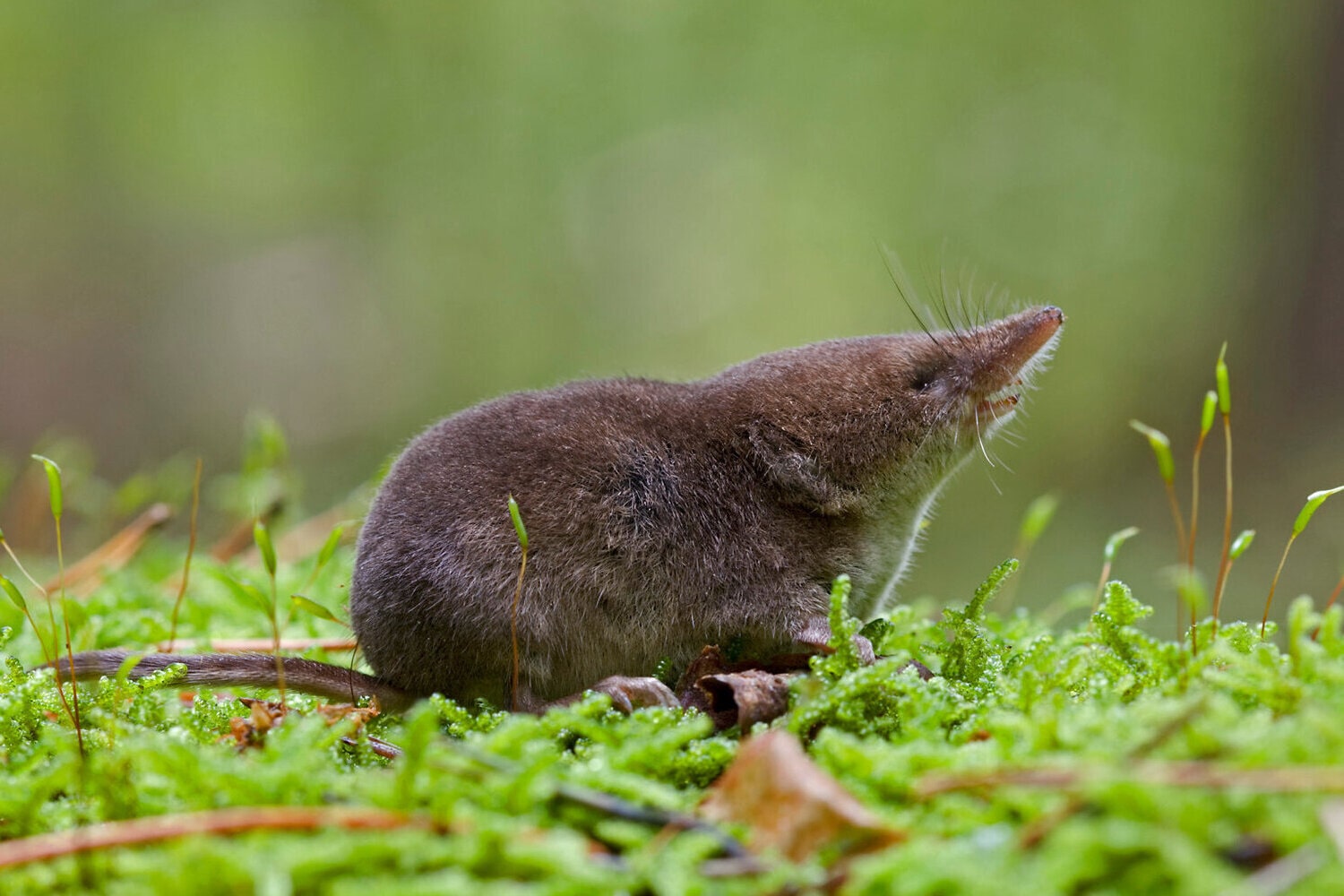Shrews are tiny creatures that can surprise even the most experienced zoologists. Despite their small size, they have an incredibly fast metabolism and unique anatomical features. Their lifespan is short, yet within that time, they show impressive endurance, activity, and adaptability to challenging environments. There are many interesting facts about shrews, some of which seem almost unbelievable. If you want to learn why these animals captivate scientists, researchers, and nature lovers alike, take a look at the list below.
- Shrews belong to the order Eulipotyphla, and their closest relatives are not rodents but hedgehogs and moles. Although they resemble mice, they form a distinct and ancient branch of mammals.
- They have such a rapid metabolism that they must eat almost constantly to avoid dying from starvation. Some species consume up to twice their body weight in food every single day.
- A shrew’s heart can beat up to 1200 times per minute when active. This is one of the fastest heart rates among all known mammals.
- Shrews typically live for only one to two years, but during that time, they can produce several litters. They reproduce from spring through autumn, sometimes even more frequently.
- Some shrew species possess venomous saliva that paralyzes their prey, such as insects or small amphibians. This is a very rare trait among mammals.
- Shrews are capable of living in low-oxygen environments like underground burrows or snow tunnels. Their blood contains a special type of hemoglobin that efficiently transports oxygen under stress.
- They do not enter true hibernation but can slow down their physiological functions in cold seasons. This state, known as torpor, helps them conserve energy.
- Shrews have very poor eyesight, but they navigate effectively using smell, touch, and a form of primitive echolocation. Some species emit high-frequency sounds that help them avoid obstacles.
- Their fur is water-repellent due to its dense structure and a greasy secretion. This allows certain species to hunt in water or burrow through damp soil.
- They can endure sharp temperature changes thanks to their unique metabolic processes. Shrews are capable of adjusting their body temperature depending on the environment.
- One of the smallest mammals in the world is the Etruscan shrew, which weighs only about 2 grams. It measures up to 4 centimeters in length and may consume food equal to three times its weight per day.
- Some species show social behavior, with mothers carrying their young, who cling to each other’s tails using their teeth. This forms a chain that allows them to move efficiently together.
- Shrews are solitary and highly territorial. Even on small patches of land, fierce fights can occur between males.
- Shrews play an important role in ecosystems by controlling the populations of insects and other invertebrates. Without them, ecological balance in many natural areas could be disrupted.
- Some species are endemic to islands or restricted habitats, making them vulnerable to extinction. Climate change and habitat loss can significantly impact their populations.
- The stomach contents of shrews often include animals that other small mammals cannot eat. They can chew through the tough shells of beetles and the exoskeletons of spiders.
- Shrew teeth are very sharp and grow continuously throughout their lives. Their reddish tint comes from iron in the enamel, making them exceptionally durable.
- In northern regions, shrews can travel beneath the snow, creating tunnels and hunting deep within snowdrifts. Their nostrils can close to prevent snow from entering.
- In response to severe stress or fear, a shrew may freeze for a few seconds to avoid detection by predators. This defense mechanism is similar to reactions seen in some birds and reptiles.
- There are over 300 known species of shrews found almost worldwide, except in Australia and Antarctica. They can adapt to a wide range of environments, from tropical forests to mountainous regions.
- In some cultures, shrews were associated with dark forces or featured in myths. Their secretive nature and nocturnal habits often led to fear and superstition among people.
- Despite being very active, shrews spend much of their time underground, where they build complex tunnel systems. These burrows serve as homes, food storage, and breeding sites.
- Their ability to move quickly is due to the unique structure of their muscles. Even with their tiny bodies, they can move swiftly through grass or soil.
- Shrews are highly sensitive to the scent of predators and can instantly change direction if they detect danger. Their sense of smell is many times stronger than that of humans and is their main sensory tool.
These amazing facts about shrews reveal how fascinating even the smallest animals can be. Although they rarely catch the eye, their role in nature is both significant and multifaceted. With their remarkable biological traits, shrews have become the focus of numerous scientific studies and a symbol of survival. We hope these captivating facts gave you a fresh perspective on this tiny but extraordinary creature.





